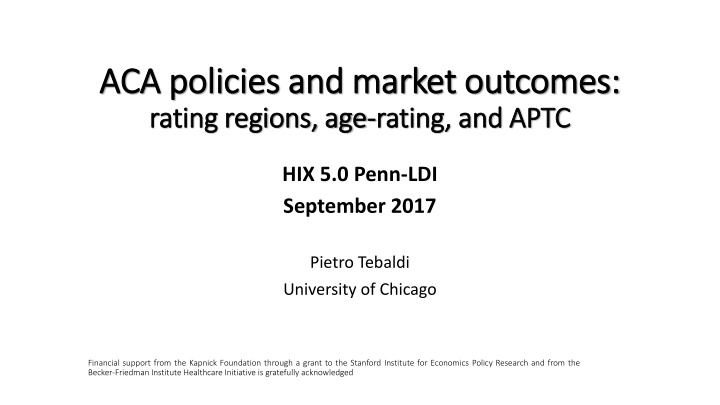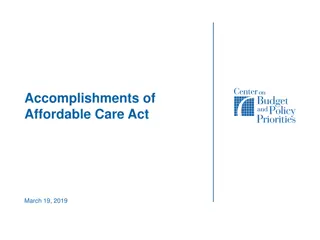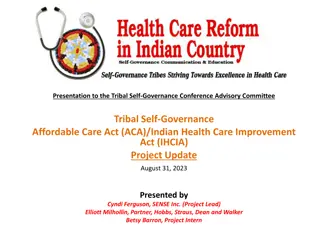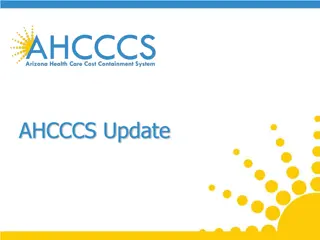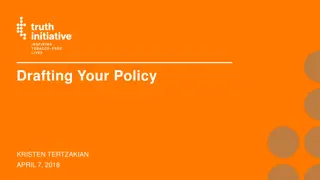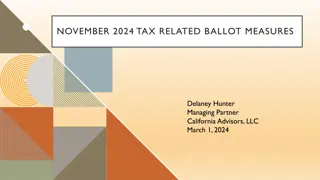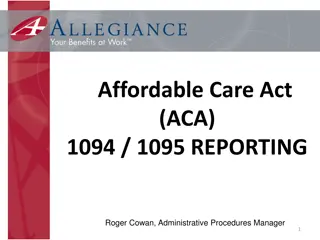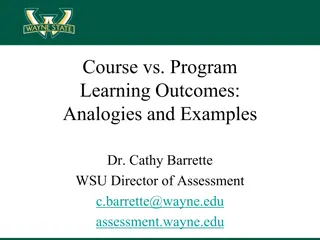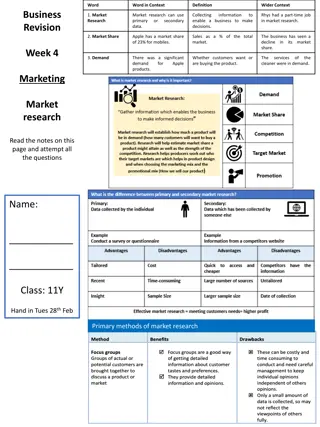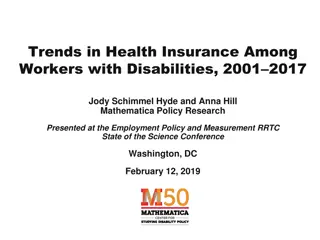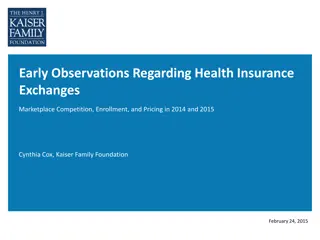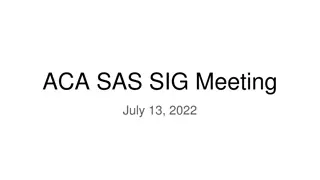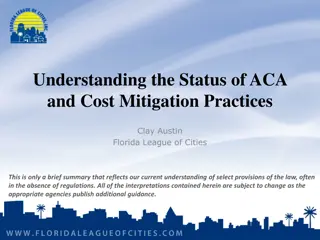ACA Policies and Market Outcomes
Exploring the impact of ACA policies on rating regions, age-rating, APTC, and market outcomes. Insights on coverage, costs, insurer responses, and market determinants like rating regions. Analysis of state variations and comparisons in carrier premiums in rural counties.
Uploaded on Sep 29, 2024 | 0 Views
Download Presentation

Please find below an Image/Link to download the presentation.
The content on the website is provided AS IS for your information and personal use only. It may not be sold, licensed, or shared on other websites without obtaining consent from the author.If you encounter any issues during the download, it is possible that the publisher has removed the file from their server.
You are allowed to download the files provided on this website for personal or commercial use, subject to the condition that they are used lawfully. All files are the property of their respective owners.
The content on the website is provided AS IS for your information and personal use only. It may not be sold, licensed, or shared on other websites without obtaining consent from the author.
E N D
Presentation Transcript
ACA policies and market outcomes: ACA policies and market outcomes: rating regions, age rating regions, age- -rating, and APTC rating, and APTC HIX 5.0 Penn-LDI September 2017 Pietro Tebaldi University of Chicago Financial support from the Kapnick Foundation through a grant to the Stanford Institute for Economics Policy Research and from the Becker-Friedman Institute Healthcare Initiative is gratefully acknowledged
What did we learn from the early years? What did we learn from the early years? Combination of Data on plans, choices, and models of ACA regulations teach lessons on the effect of specific rules on policy relevant outcomes oWho gets covered? oHow much does it cost?
Three questions with some answers Three questions with some answers How do insurers respond when we change rating regions? Dickstein, Duggan, Orsini, Tebaldi (2015) What is the effect of constraints on age-rating? Ericson, Starc (2015); Orsini, Tebaldi (2017) How does the design of APTC affect enrollment and spending? Jaffe, Shepard (2017); Tebaldi (2017)
How does rating region determination affect market How does rating region determination affect market outcomes? outcomes? Rating region defines a market: group of counties (zip codes) defining level at which regulations apply and decisions of buyers and sellers take place Critical design decision: how to bundle counties? Tradeoffs: Larger markets increase size of enrollment pools, which also have a more homogeneous composition Larger markets force insurers to have a broader network of medical providers covered by their plan
States behaved very differently States behaved very differently
Our analysis Compare carriers and premiums in Rural counties that were bundled with nearby urban counties Rural counties that were not bundled with nearby urban counties
Main results: When a small, rural county is bundled in a rating region with a large, urban county: One extra carrier on average Silver premium (for 45 year olds) is $300/year lower Should we then have very large regions? No: larger regions (in land area) and heterogeneous regions (e.g. large within region variation in population density or racial composition) present ceteris paribus less insurers and higher premiums We should think of optimal region determination as a function of Markets of medical providers Population composition and geographic distribution
WHAT IS THE EFFECT OF THE CONSTRAINTS WHAT IS THE EFFECT OF THE CONSTRAINTS ON AGE ON AGE- -RATING? RATING?
Subsidies + age Subsidies + age- -rating adjustments rating adjustments Premium Premium received by insurer absent constraint on age-rating Premium received by insurer under constraint on age-rating Public Spending in APTC Price ceiling = premium paid by subsidized buyer maximum affordable amount Age of buyer For APTC beneficiaries ( 85%) no transfer from Y to O; change in public spending
Second implication of age Second implication of age- -rating adjustments rating adjustments Positive relationship between price of 21-y.o. and share of over 50 uninsured in a region Constrained premium in old market Premium Constrained premium in young market Unconstrained premium 3:1 3:1 5:1 Age of buyer Relatively older markets have higher premium for young buyers
Difference in pre-APTC monthly premium for 21 year olds between counties with above average % 50-64 uninsured and below average % 50-64 uninsured 15 13 11 9 7 5 3 1 -1 2010 2011 2012 2013 2014 2015 2016 2017
Effect of age-rating constraints imposed under ACA on APTC spending (federally facilitated marketplaces) Smaller impact on coverage: 3% enrollment reduction among under 50 below 400% FPL 6% enrollment reduction among under 50 above 400% FPL
SHOULD MAXIMUM AFFORDABLE AMOUNTS SHOULD MAXIMUM AFFORDABLE AMOUNTS VARY WITH AGE? VARY WITH AGE?
Over 50 vs young invincible in Covered California enrollment data Over 50 vs young invincible in Covered California enrollment data Relatively older buyers are more willing to pay for health insurance
% drop in participation if APTC are $100/year lower % drop in participation if APTC are $100/year lower
Age Age- -adjustments to APTC adjustments to APTC Premium Premium received by insurer Premium Premium received by insurer Public Spending Public Spending Price ceiling = premium paid by buyer Age adjusted price ceiling Age of buyer Age of buyer subsidize more young invincible and achieve lower cost, lower (gross) premium for all buyers can also lower maximum affordable amount for older buyers lower spending, more participation from all groups, higher total profits
Equilibrium calculations with estimates from Covered California Equilibrium calculations with estimates from Covered California Increase APTC of under 45 by $50/month , decrease APTC of over 45 by $25/month All buyers face lower net-of-APTC premiums
Wrapping up Wrapping up Observational data and economic models teach us how specific rules in ACA marketplaces are critical to policy-relevant outcomes oHow we draw rating regions matters oAge-rating constraints impact both, participation and spending oAge adjustments to maximum affordable amounts can make all buyers better off without extra spending Many open questions: oHow important is active purchasing? oHow would insurers adjust entry/networks/generosity if we were to change APTC? oCan re-insurance / risk-adjustment play a complementary role to APTC?
